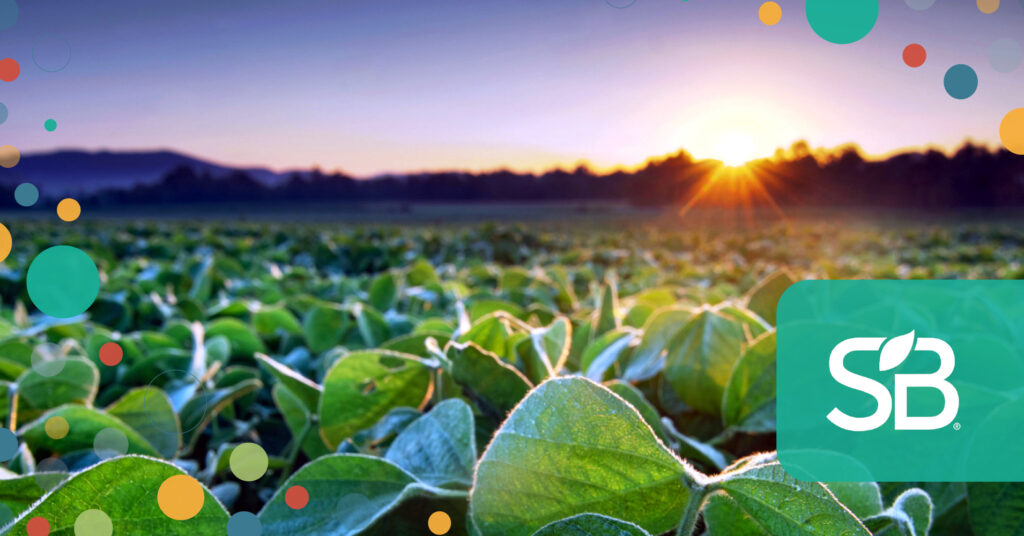How US Soy Is Cultivating Sustainability Around the World
4 min read
Published 5 hours ago.
About a 4 minute read.
Image: U.S. Soybean Export Council
Sponsored Content
/ This article is sponsored by
US Soy.
Here, Abby Rinne — Director of Sustainability at the U.S. Soybean Export
Council — discusses how U.S. Soy is helping customers both here and abroad reach their sustainability goals.
When it comes to sustainability, all soy products are not created equal. Over
the last few decades, global soy production has risen and had major impacts on
water,
energy,
deforestation
and soil
health
— which is why it is essential for companies utilizing soy as an ingredient to
ensure a sustainable supply chain.
U.S. Soy is committed to sustainable production and
continuous improvement through the utilization of technology, collaboration
across stakeholders, and rigorous sourcing requirements — a commitment that can
be used as a proof point for their customers’ own ESG initiatives through the
U.S. Soy Sustainability Assurance
Protocol
(SSAP) with transferable certificates.
Sustainable Brands® sat down with Abby
Rinne, Director of
Sustainability at the U.S. Soybean Export Council, to
discuss how U.S. Soy is helping its international customers reach their
sustainability goals.
What does it mean for soy to be sustainably produced?
Abby Rinne: US soybean farmers have been focused on sustainable production
for a very long time. Around 98 percent of US farms are family farms. This means
many farms are passed down through generations — including the soil the crops
are grown on. Farmers are stewards of their land — striving to learn more and
adjust production methods to improve the soil and environment, while improving
the production of soybeans.
Decoding effective methods of driving consumer behavior change
Join us for a transformational experience at SB Brand-Led Culture Change — May 8-10 in Minneapolis. This event brings together hundreds of brand leaders eager to delve into radical lifestyle shifts and sustainable consumer behavior change at scale. The trends driving cultural acceleration are already underway, and you can be at the forefront of this transformative movement.
US soybean farmers employ things such as soil testing to determine the nutrients
present in the soil and yield monitors at harvest; both are used to create plans
for planting, in-season applications, scouting and harvesting. The use of
precision agriculture allows all these practices to be done with detailed
accuracy to minimize inputs while maximizing yields.
US soybean farmers follow numerous laws and regulations that protect our natural
resources and the public, as well as participate in voluntary programs offered
through the US Department of Agriculture (USDA), such as the
Conservation Reserve
Program
and the Environmental Quality Incentives
Program.
All of these efforts and practices contribute to U.S. Soy having the lowest
carbon footprint compared to soy of other countries: When you evaluate
cultivation, transport and land-use change, U.S. Soy’s carbon footprint is 92
percent lower than other major soy-sourcing countries, according to Blonk
Consultants’ Agri-Footprint 5.0
database.
Image credit: US Soybean Export Council
US soybean farmers have a strong commitment to sustainable production and
continuous improvement. This is highlighted by the sustainability goals adopted
in 2014 and based on the Field to Market 2000 benchmark. By 2025, U.S. Soy
farmers commit to:
-
Reducing land-use impact by 10 percent
-
Reducing soil erosion by 25 percent
-
Increasing energy use efficiency by 10 percent
-
Reducing total GHG emissions by 10 percent
How has U.S. Soy engaged stakeholders to drive sustainability?
AR: U.S. Soy has engaged with various organizations throughout its
sustainability journey — including the European Feed Manufacturers’
Federation (FEFAC), Global Seafood Alliance Best Aquaculture
Practices, UK Roundtable on Sustainable Soya, Aquaculture Stewardship
Council, World Wildlife Fund and The Nature Conservancy, amongst
others. These interactions involve understanding sourcing requirements, engaging
in feedback, and representatives serving on working groups and advisory
positions.
What is the U.S. Soy Sustainability Assurance Protocol (SSAP)?
AR: The SSAP was developed in 2013
through a multi-stakeholder process to meet international sourcing requirements.
It verifies that U.S. Soy is raised in a sustainable manner by protecting
natural resources — using production practices that enhance the environment
while increasing production efficiency, protecting the public and workers, and
continuously improving. Global customers seek SSAP-verified soy, with this past
marketing year having 44.48 million metric tons — or 70 percent — of U.S. Soy
shipped with an SSAP certificate. The SSAP has been validated by the FEFAC 2021
Soy Sourcing
Guidelines,
has achieved Silver Equivalency through SAI Platform’s Farm
Sustainability Assessment, and is accepted by
Best Aquaculture Practices and GlobalGAP.
Companies that source their soy with SSAP verification can brand their products
with a Sustainable U.S. Soy logo — which is being used by 93 international
companies on about 1,000 SKUs across 18 countries and allows companies to
demonstrate their commitment to sustainable sourcing.
What is the importance of the SSAP Transferable Certificate, both domestically and globally?
AR: SSAP transferable certificates were developed in response to customer
requests. It allows customers to keep records of their sustainable U.S. Soy
purchases, use these purchases to meet their ESG goals, and report on their
progress toward those goals. Importers will be able to receive a certificate in
their name from an exporter; the importer will then be able to transfer
certificates to their customers. The certificate has the potential to be
transferred a total of four times after export.
This article was funded in part by U.S. Soy farmers, their checkoff and the soy
value chain.





